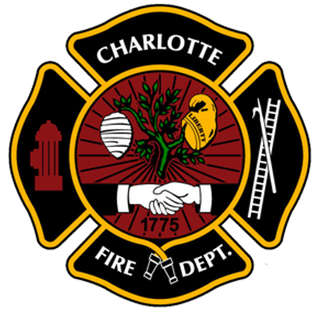Top Qs
Timeline
Chat
Perspective
Charlotte Fire Department
Fire department in North Carolina, U.S. From Wikipedia, the free encyclopedia
Remove ads
The Charlotte Fire Department (CFD) provides fire suppression, emergency medical services, technical rescue services, hazardous materials mitigation, disaster response, code enforcement, fire investigations, and public education for the city of Charlotte, North Carolina, United States.[3][4][5] The department is responsible for an area of approximately 312 square miles (810 km2) with a day population of two million and a night population of 885,000.[5]
Remove ads
History
Summarize
Perspective

The Charlotte Fire Department was officially formed in 1875, although fire services existed in the area for decades before that.[6]
Charlotte Fire Department is notable for its role in the development of NFPA 704, the "fire diamond" found on chemicals which depicts in a simple and clear manner the flammability, health hazards and reactivity of the substance. A fire at the Charlotte Chemical Company in 1959 led to severe injuries to many of the firefighters.[7][8] Upon arrival, the fire crew found a fire burning inside a vat that firefighters assumed to be burning kerosene. The crew tried to suppress the fire with water, which resulted in the vat exploding due to metallic sodium being stored in the kerosene. Thirteen firefighters were injured, several of whom had critical injuries while one lost both ears and most of his face from the incident. At the time, such vats were not labelled with the materials they contained, so firefighters did not have the necessary information to recognize that hazardous materials were present, which required a specific response. In this case, sodium was able to react with water to release hydrogen gas and large amounts of heat.
The Charlotte Fire Department developed training to respond to fires involving hazardous materials, ensured that protective clothing was available to those responding, and expanded the fire prevention inspection program. Fire Marshal J. F. Morris developed the diamond-shaped placard as a marking system to indicate when a building contained hazardous materials.[9]
Remove ads
Stations and apparatus
Summarize
Perspective
As of July 2025[update] this is the current list of stations and apparatus for the department:[10]
Remove ads
See also
References
Wikiwand - on
Seamless Wikipedia browsing. On steroids.
Remove ads

